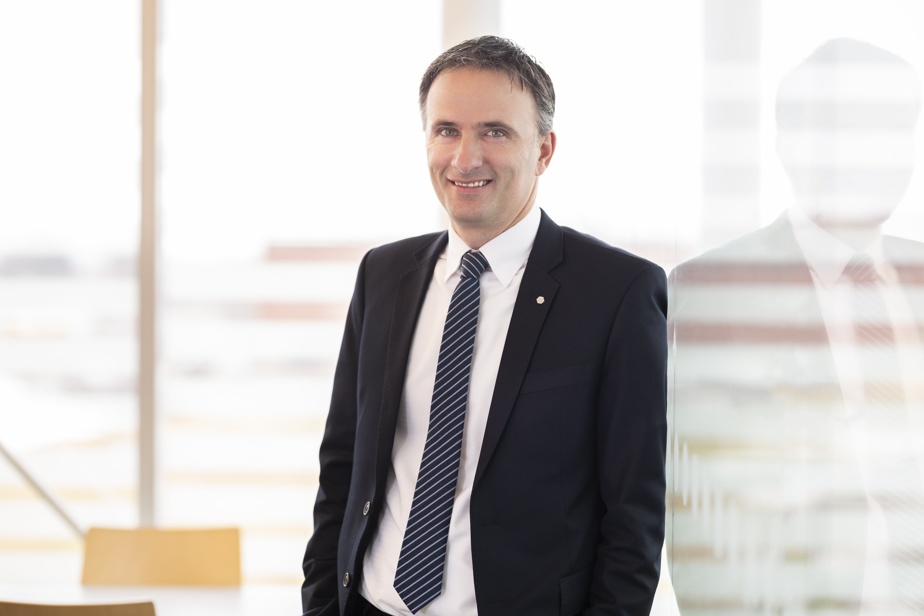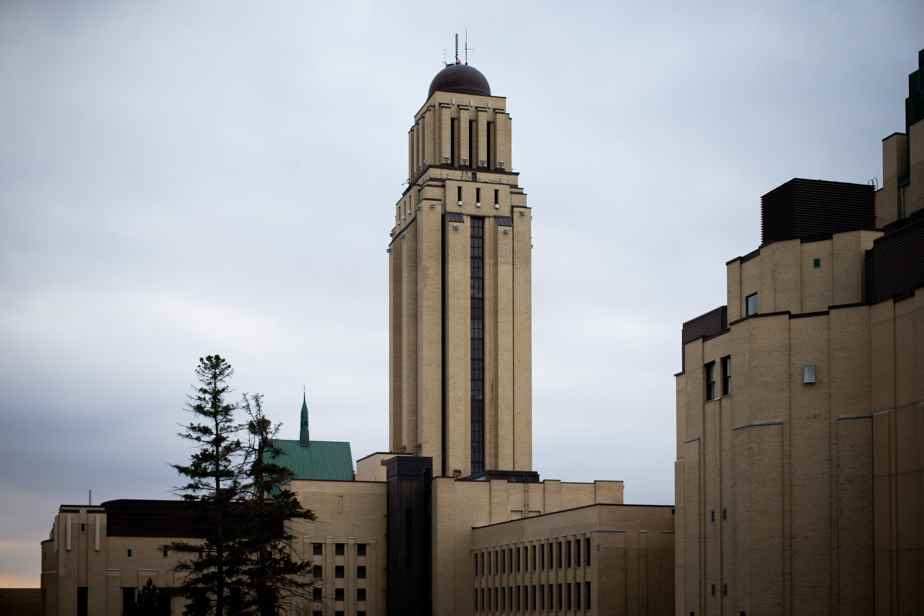Émilie*, 45, is an education professional and a single mother of two children aged 11 and 13.
Posted at 7:00 a.m.
The situation
She enjoys a well-paid job and extra income through alimony paid by the father of her two children.
His annual income of around $101,000 per year, or a little less than $70,000 in net income after taxes and deductions, allows him to fairly support the family lifestyle.
Emily notices that her ability to save to build up a reserve fund and a financial asset independent of her job is relatively low.
In his personal balance sheet, the assets are very concentrated in the net worth of the family home (approximately $280,000 after mortgage balance) and in his participation in the solid pension plan for Quebec public sector employees (RREGOP, at defined benefits).
On the other hand, the financial assets accumulated by Emilie in RRSPs independent of her employment are limited to $26,000. Also, Émilie has not yet made any contributions to her tax-free savings account (TFSA) or set up a registered education savings plan (RESP) for her two children.
As for liabilities, in addition to the mortgage loan balance of $119,000 whose renewal is imminent, Émilie’s balance sheet shows an unpaid balance of $8,000 on high-interest credit cards, as well as a balance of $8,000 on a home equity line of credit at a rate of 3.7%.
Numbers
Financial assets :
– Registered retirement savings plan (RRSP): $26,000
– In a tax-free savings account (TFSA): $0
– In a registered education savings plan (RESP): $0
– In current savings account: $1,000
– In the Quebec public sector pension plan (RREGOP): defined benefits of 70% of salary after 35 years of service or at 60e Emily’s birthday
Non-financial assets:
– Family residence: approximately $400,000
Passive :
– Mortgage balance: $119,000
– Credit card balance: $8000
– Mortgage line of credit balance: $8,000
Annualized income:
– Employment: $92,000
– Alimony: $11,880
Main annualized disbursements:
– Related to the residence: approx. $21,000/year
– Related to family lifestyle: approx. $45,000/year
– Linked to savings/investment (RRSP): $1320/year
The questions
In this context, Émilie is looking for advice on financial planning in order to be able to carry out her priority projects in the medium and long term.
First of all, Émilie wants to have the means to adequately finance her children’s post-secondary studies, which are planned in a few years.

PHOTO ALAIN ROBERGE, LA PRESSE ARCHIVES
McGill University
Secondly, Émilie wants to build up a savings cushion with a view to replacing her car, which is getting old, in the next two or three years.
For the moment, she estimates the total cost at around $25,000, to be financed by auto loan or by leasing over a few years.
Thirdly, Émilie anticipates having to carry out renovation and maintenance work on the family home in a few years. The proposed budget would be in the range of $25,000 to $30,000.
Finally, in the longer term, Émilie wonders about optimizing her independent savings for retirement, considering that she already participates in a solid defined benefit pension plan in the Quebec public sector.
Émilie’s questions and concerns were submitted for analysis and advice to David Paré, who is a financial planner and investment savings advisor with “L’Équipe Lacasse, Paré, Bédard”, which is affiliated with Desjardins Wealth Management in the Quebec region.
Advice
From the outset, David Paré considered that Émilie’s financial situation was “all in all good” given her situation of parental responsibilities and her professional job with a solid pension plan.
On the other hand, on the budgetary level, David Paré notes the absence of leeway in the event of costly unforeseen events in the family lifestyle.

PHOTO PROVIDED BY DESJARDINS WEALTH MANAGEMENT
David Paré, financial planner and investment savings advisor in “The Lacasse, Paré, Bédard team”
“At the moment, everything indicates that it is an outstanding balance on the credit card which serves as a bit of wiggle room. But it’s far too costly in interest, when she already has a mortgage line of credit available,” points out David Paré.
In this context, he recommends, as a priority, that Émilie take advantage of the very next renewal of her mortgage loan to add an amount to repay the balances of her credit cards and her mortgage line of credit.
Also, David Paré suggests that Émilie add $25,000 to her next mortgage loan balance, which could serve as a reserve fund for her vehicle replacement projects and renovation work on the family home.
“By doing so, Émilie will not only be able to consolidate her debts into a single mortgage loan on better terms, but she will also be able to consolidate her various repayments into a single mortgage payment that would be less than the total of her current payments,” says David Paré. .
According to her calculations, with a new mortgage balance raised from $119,000 to $160,000, amortized over 15 years and at an interest rate of approximately 4.5%, Emily would then have a single monthly payment of approximately $1,200 $.
“That’s almost $1,000 less per month than what Émilie is spending these days in mortgage payments and partial repayment of credit card and line of credit balances,” says David Paré.
“Consequently, it is with this thousand dollars in available cash that Émilie could begin to achieve her main medium-term financial objective: prepare adequate funding for the post-secondary studies of her two children. »
Education savings
Starting with the accelerated bailout of an education savings account (RESP) for the 13-year-old.
“He has 4 years left – up to age 17 – of eligibility for tax subsidies equivalent to 30% of contributions to his RESP up to the maximum of $2,500 per current year, plus $2,500 per previous year without contributions, explains David Ready.
“By contributing a maximum of $5,000 per year [env. 415 $ par mois] and adding the tax subsidies over the years, Emilie’s eldest child’s RESP balance would be at least $26,000 at age 17.e anniversary. It promises to be a nice sum to support his post-secondary education projects. »
As for the RESP for the 11-year-old child, David Paré recommends that Émilie start contributing as her cash is available, but limit herself to the taxable maximum of $2,500 per year.
“Because her youngest child still has six years of RESP contribution eligibility before she turns 17e birthday, Emily can wait until the end of the double contributions [courantes et de rattrapage] the RESP in his eldest child, in four years, before increasing the contributions to the RESP of the youngest up to the maximum amount of “catch-up” of the years without contributions, explains David Paré.
“At this rate [2500 $ par an pendant quatre ans, ensuite 5000 $ par année pendant deux ans]the capital accumulated in the cadet’s RESP and increased by grants over the years could approach $28,000 by his 17e anniversary. As for the eldest, it would be a good total to start his post-secondary studies. »
Along the same lines, David Paré points out to Émilie that in the event of budget surpluses over the next few years, she would have a financial and fiscal advantage in using them first to increase her youngest child’s RESP contributions to the amount eligible for the tax subsidy, instead of making contributions to their personal TFSA and RRSP accounts.
“Retirement savings planning for Émilie is already well established with the solid Quebec public sector pension plan, hence the little need to add more through RRSPs and TFSAs for the moment,” says David Paré.
“However, after the end of her children’s RESP contributions, and the completion without too much additional cost of her plans to replace her car and work on the house, Émilie could use her then foreseeable budget surpluses to replenish her RRSP to the maximum. contributions eligible for the tax credit. »
By doing so, explains David Paré, Émilie will also be able to optimize the tax yield of contributions to her RRSP when she will probably be in her years of highest taxable employment income.
When her RRSP has been filled to the tax-allowable level, Émilie can then use any budget surpluses to accelerate the final repayment of the mortgage loan, according to the permitted conditions, or contribute to her TFSA account as investments for future use and non-taxable. .
* Although the case highlighted in this section is real, the first name used is fictitious.
Are you planning a project that requires a wise use of your money? Do you have financial problems?

